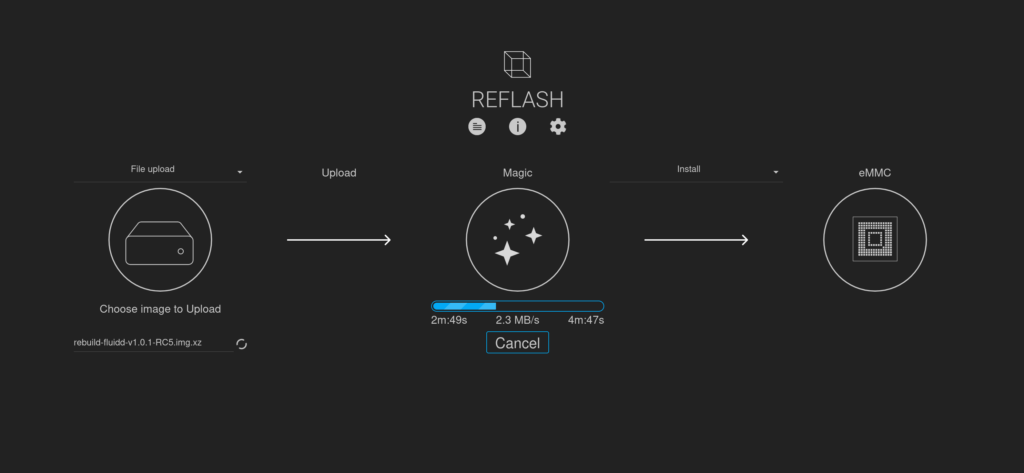Our Location
304 North Cardinal St.
Dorchester Center, MA 02124
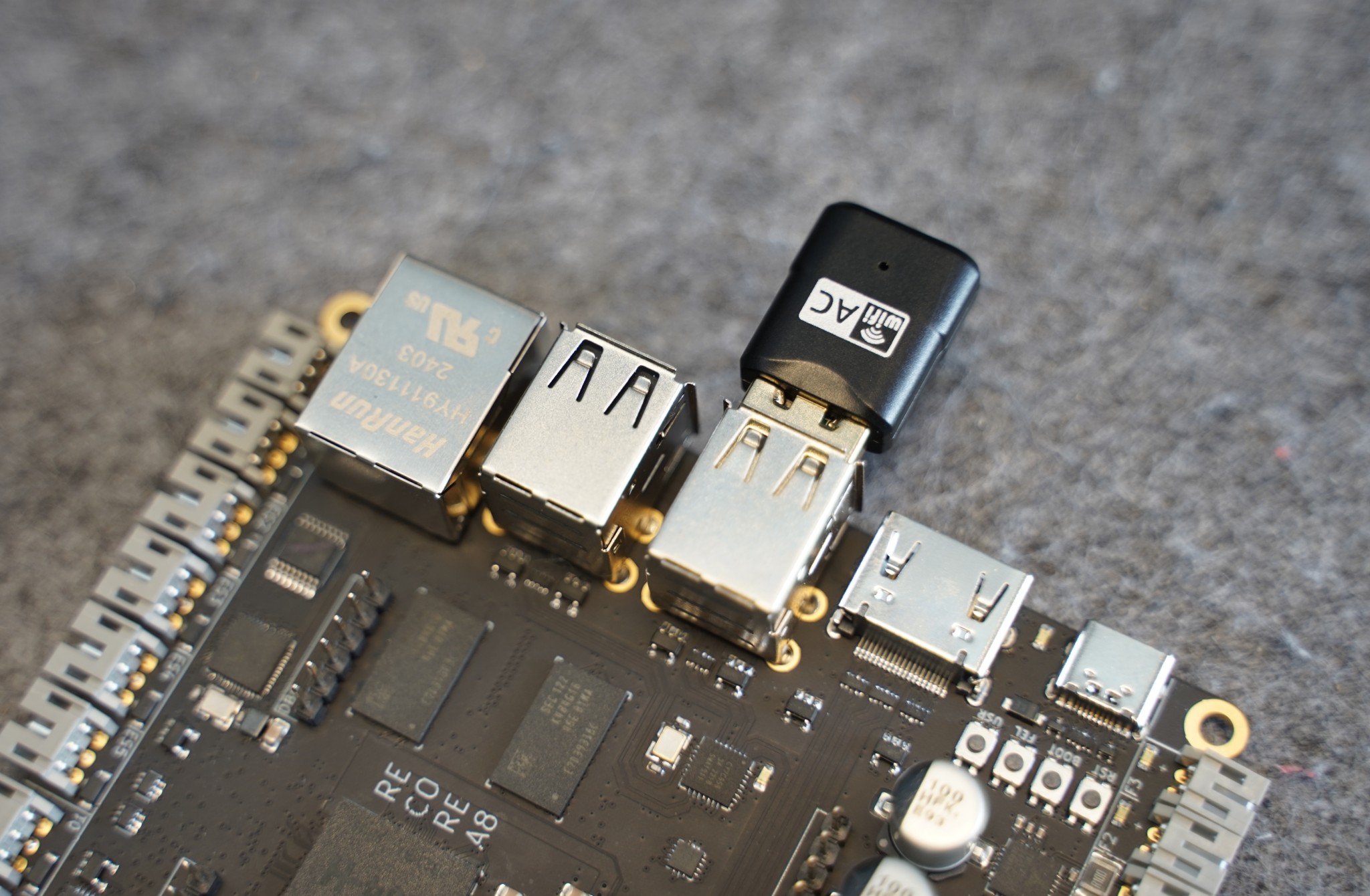
Some small changes has come to Rebuild and Reflash in the last few weeks, and now version 1.0.1 has been release and marked as the latest for both versions. For those who don’t know, Rebuild is the software/OS that runs on all revisions of Recore. It’s based on Armbian with added Klipper, and the choice of MainSail, Fluidd or OctoPrint as UI on top. Reflash is the software that is used to install Rebuild on Recore.
For Rebuild, the Wi-Fi has now gotten an overhaul and so the board should come up as an Access Point from the start. This has been well tested with Rexfer dual band Wi-Fi dongle which is the “official”/works out of the box Wi-Fi dongle for Recore.
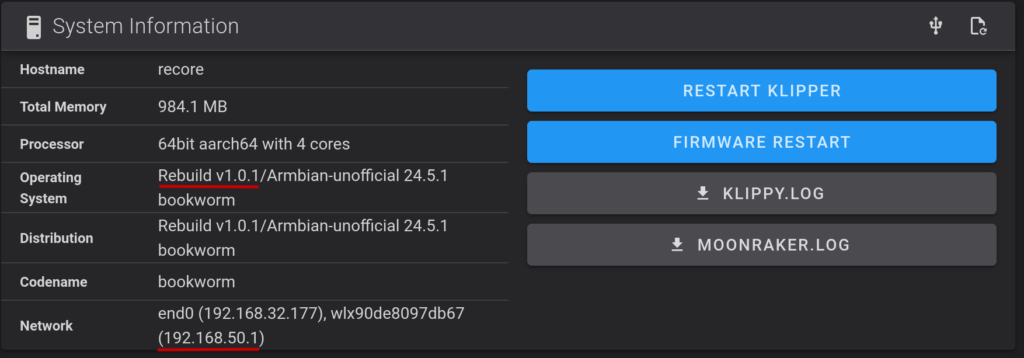
We have also worked on better integration of SSH between Moonraker, Fluidd, Reflash and OctoPrint. If SSH is not enabled in Reflash, it can later be enabled via either of the top level user interfaces. It is now possible to start SSH as a service in MainSail/Fluidd, but it’s not good to leave the SSH interface exposed with the default password. Therefore there is a timeout on the SSH service, so it is shut off again after an hour is the password is not changed. We consider the top level UIs well enough protected to be able to start the SSH service.
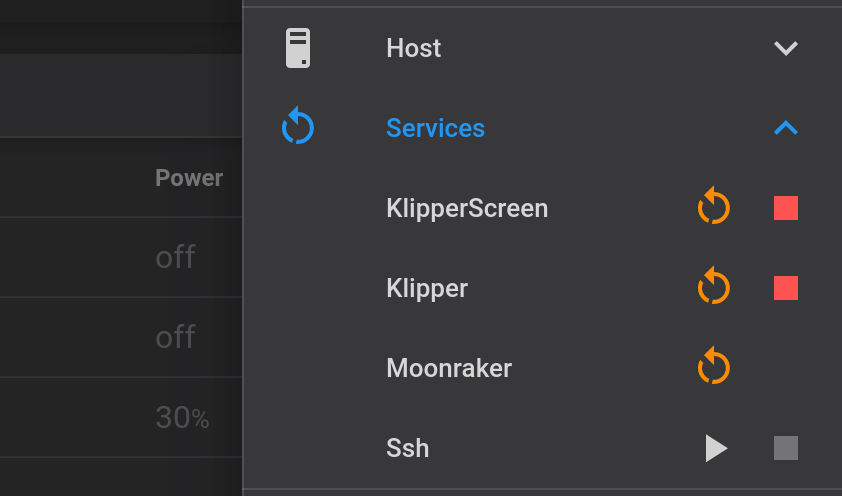
For Reflash the most important updates are support for Wi-Fi access point, serial number update functionality, touch panel rotation and adding the IP-address to the screen.
If there is a Wi-Fi dongle attached when Reflash is booted or if one is inserted after a boot, Recore will come up as an access point so it is possible to connect to the board and do a complete flash without requiring an ethernet cable and finding the IP address. Since the board is in AP-mode, it will not have access to the internet and thus Rebuild can not be downloaded, but instead it must be uploaded from the host computer.
For all Recore A6, A7 and A8 boards, the serial number and a calibration file is present in a small 4 MB hardware partition in the eMMC. This is nice because it will survive a complete wiping of the eMMC which is what happens when installing a new version of Rebuild or Refactor. For Recore A5, this was not present. But those calibration files exist in the Recore repository, so it is possible to add them simply by downloading them from github. If the serial number is missing, a pop-up with an option to add this comes up in Reflash. ‘
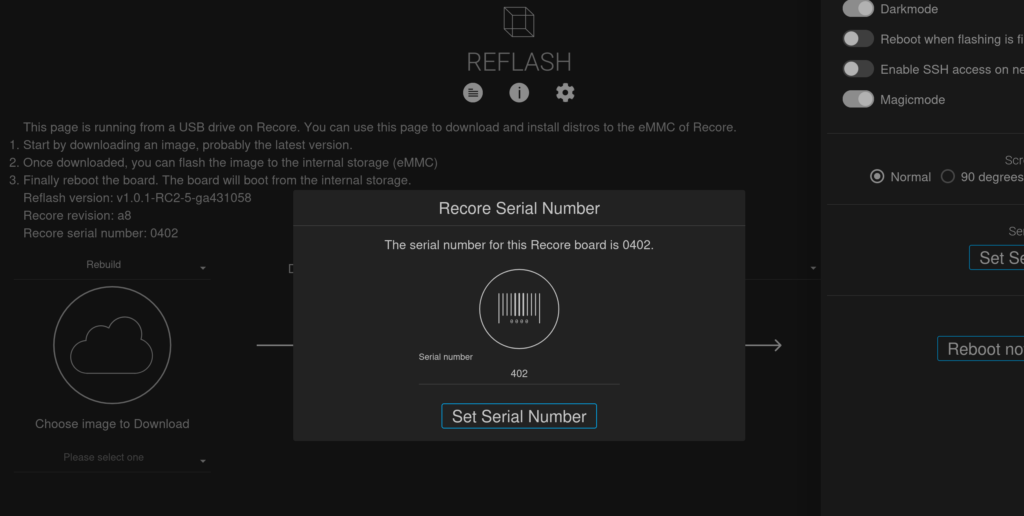
It’s important to know the hardware revision when using Reflash so that the right device tree binary (DTB) is set. The DTB describes the hardware and it is now more or less the only thing that separates the different hardware versions. There are some minor differences in the Klipper config file as well, but Reflash will automatically install the right config file based on the UI and hardware revision.
A small change that is nice for those with multiple Recores in their office is to quickly find out what the IP-address is. The Reflash UI now shows the resulting hostname/mDNS name even if there is a conflict.
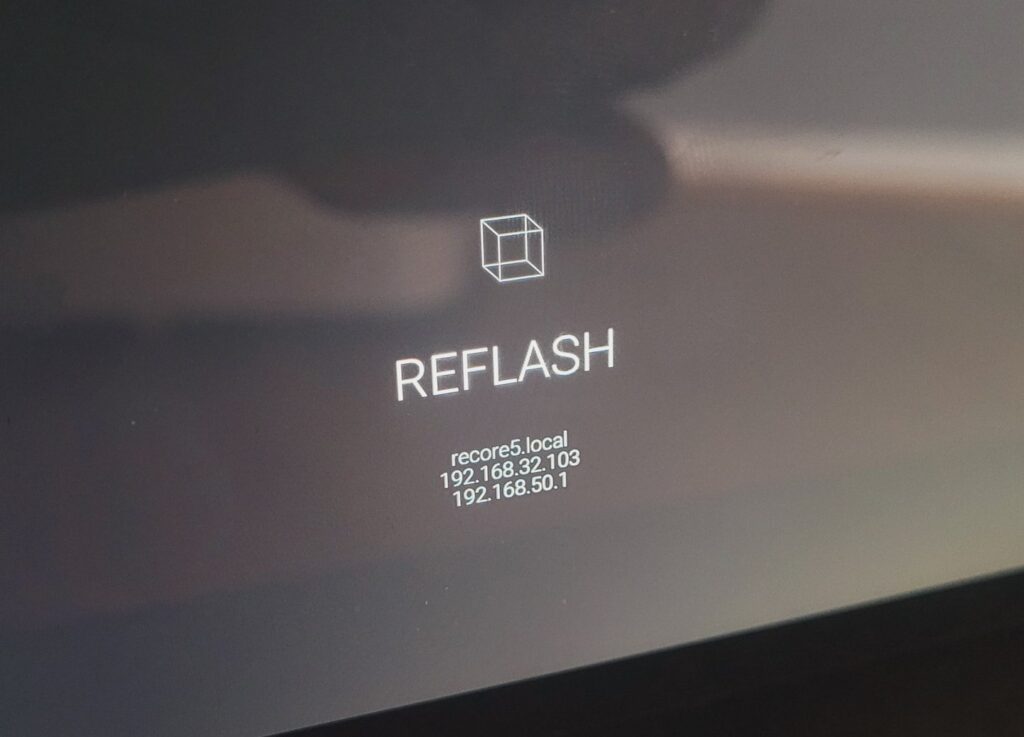
A small and fun thing is the addition of “magic mode” for file uploads. Magic here refers to the direct transfer of a complete distro (Rebuild or Refactor) directly from the internet and to the eMMC without the intermediate step of first storing it to the USB drive. This has now been extended to also work with file uploads. For us developers creating images, uploading and testing, this is hopefully a nice addition.
